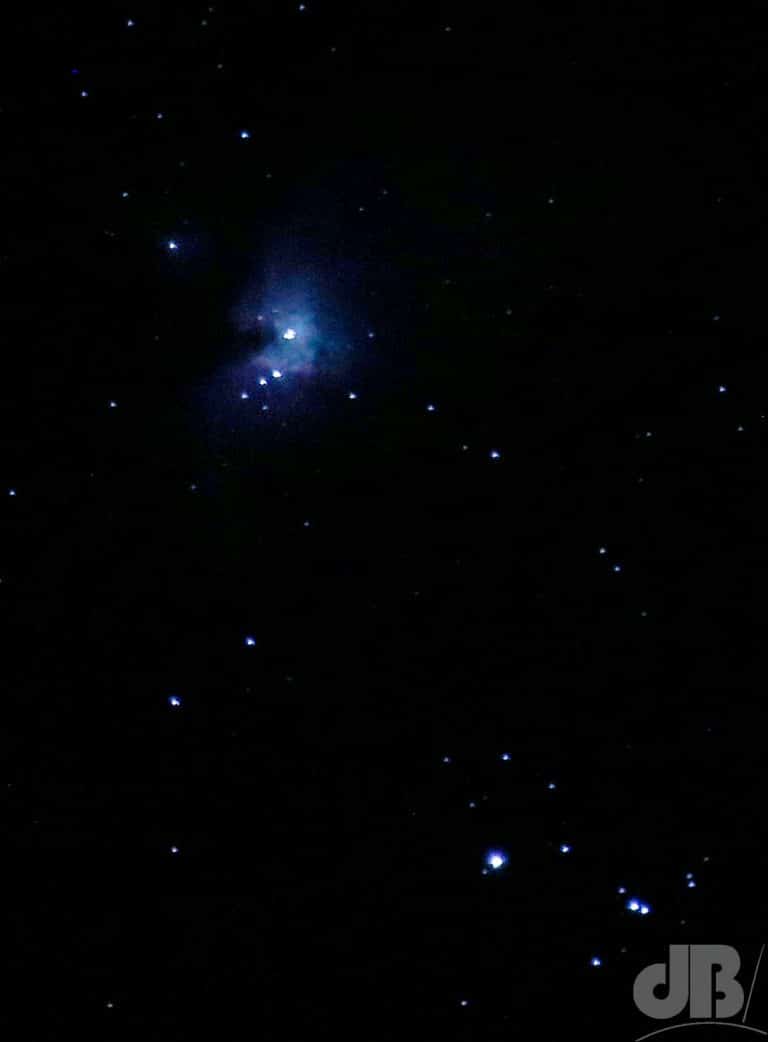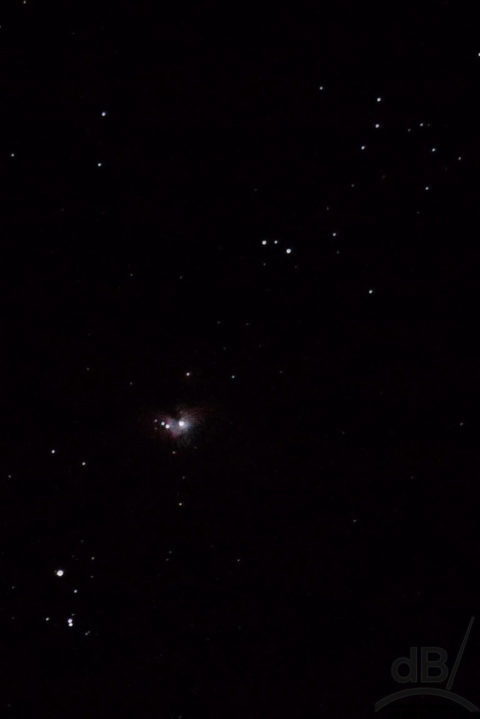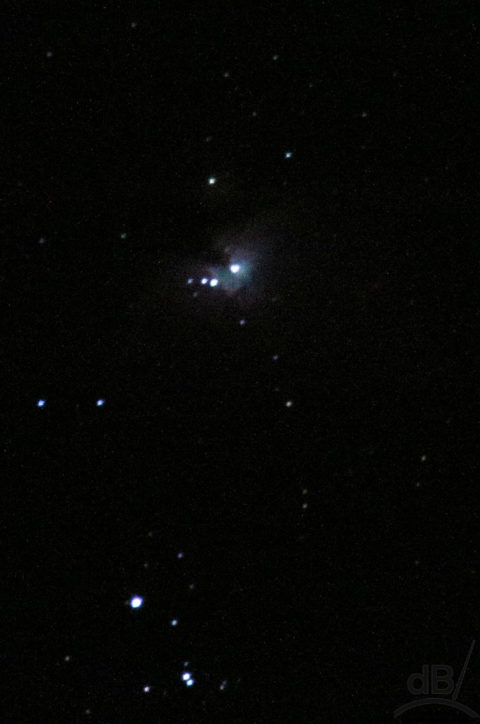UPDATE: Revisited the photos I took early in 2018 of the Orion Nebula and did some “levels” adjustments to get a better view. This particular shot was snapped at 600mm zoom (Sigma 150-600 lens) on a Canon 6D. F/6.3, 0.8 seconds exposure, ISO 3200.

The constellation of Orion is best visible in the Northern hemisphere during crisp and clear winter nights. It’s very prominent with its four “corner” stars (top two Orion, the hunter’s shoulders, bottom two the hem of his skirt) around the three-in-a-line belt and the dangling sword.

With the camera on a tripod and various lenses set to shutter speeds based on the rule of 500 I mentioned previously (precludes star trails), I had a go at photographing this constellation and then zooming in on that sword of his, which harbours the Orion Nebula. You will have to read the earlier post if you want more details about what settings to use for stellar photography.
It was a clear night last night and the moon had not yet risen, so I switched off all the house lights and ventured into our back garden with camera, tripod and shutter release. I didn’t quite get a low-noise sharp photo even with my Sigma 600mm zoom, but I did get something. I will try again on the next clear night while Orion is still riding high.

That splodge in the middle of Orion’s sword is a glowing cloud of gas and dust some 1,344 lightyears from Earth (give or take 20 ly). It is the brightest nebula in the night sky and visible to the naked eye and the closest region of mass star formation. It is a star nursery where gravity pulls together that dust and gas over the course of millions of years into new stars.